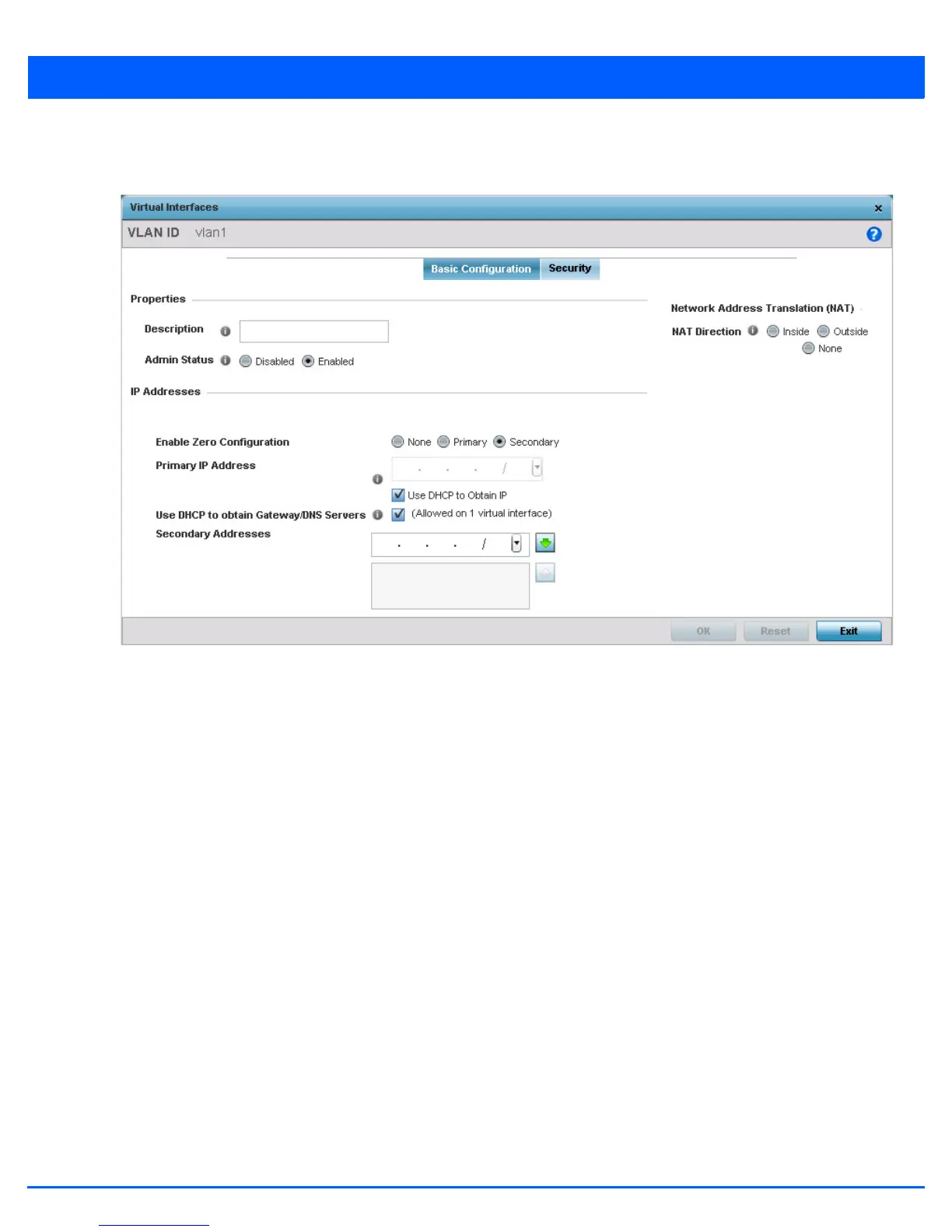5 - 84 WiNG 5.5 Access Point System Reference Guide
18. Select the Add button to define a new set of virtual interface basic settings, or Edit to update the settings of an existing
virtual interface configuration.
Figure 5-46 Network - OSPF Virtual Interfaces - Basic Configuration tab
19. Within the Properties field, enter a 32 character maximum Description to help differentiate the virtual interface
configuration used with this OSPF route. Enable/disable admin privileges as need. They’re disabled by default.
20. Use the IP Addresses Area to set how route addresses are created for the virtual configuration.
Zero Configuration can be enabled and set as the Primary or Secondary means of providing IP addresses for the OSPF virtual
route. Zero configuration (or zero config) is a wireless connection utility included with Microsoft Windows XP and later as
a service dynamically selecting a network to connect based on a user's preferences and various default settings. Zero config
can be used instead of a wireless network utility from the manufacturer of a computer's wireless networking device. The
drivers for the wireless adapter query the NDIS Object IDs and pass the available network names (SSIDs) to the service.
The service then lists them in the user interface on the Wireless Networks tab in the connection's Properties or in the
Wireless Network Connection dialog box accessible from the notification area. A checked build version of the WZC service
can be used by developers to obtain additional diagnostic and tracing information logged by the service.
21. Select Use DHCP to Obtain IP to use the access point’s DHCP server resource as the means of providing requested IP
addresses to the OSPF route’s virtual interface.
22. Select Use DHCP to Obtain Gateway/DNS Servers to learn the default gateway, name servers, and domain name on
just this interface. Once selected, specify an IP address and mask in dot-decimal format.
23. Define the NAT Direction as either Inside, Outside or None. Network Address Translation (NAT), is an Internet standard
that enables a Local Area Network (LAN) to use IP addresses for internal traffic (inside) and a second set of addresses for
external (outside) traffic.
24. Select OK to save the changes to the basic configuration. Select Reset to revert to the last saved configuration.
25. Select the Security tab.

